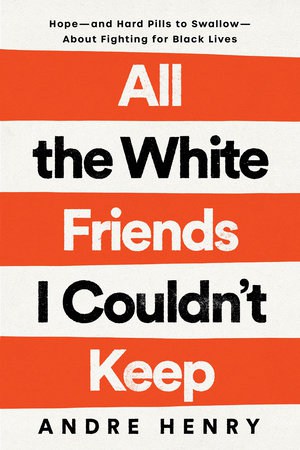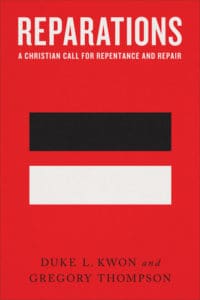 As a boy, my greatest fear was that I’d live to see the end of the world—a fear I’d absorbed by spending time with my grandma. Mumma kept her TV on all day, but she only watched a Christian station called the Trinity Broadcasting Network. Every week, I’d sit cross-legged on her bedroom floor and watch TBN’s roster of charismatic televangelists parade across their gaudy stage, explaining the ins and outs of the coming end of days. They used charts and diagrams. They spoke of stars falling to earth, the moon turning to blood, and dragons and monsters emerging from the sea—weird, I know. They warned that a charismatic, anti-Christian world leader was coming to establish and preside over a one-world government, followed by seven years of something called “The Great Tribulation.” The Tribulation years were predicted to be the last years of human history. But the most frightening of their end-times prophecies concerned something they called the Rapture.
As a boy, my greatest fear was that I’d live to see the end of the world—a fear I’d absorbed by spending time with my grandma. Mumma kept her TV on all day, but she only watched a Christian station called the Trinity Broadcasting Network. Every week, I’d sit cross-legged on her bedroom floor and watch TBN’s roster of charismatic televangelists parade across their gaudy stage, explaining the ins and outs of the coming end of days. They used charts and diagrams. They spoke of stars falling to earth, the moon turning to blood, and dragons and monsters emerging from the sea—weird, I know. They warned that a charismatic, anti-Christian world leader was coming to establish and preside over a one-world government, followed by seven years of something called “The Great Tribulation.” The Tribulation years were predicted to be the last years of human history. But the most frightening of their end-times prophecies concerned something they called the Rapture.
The Rapture was an end-of-days event in which millions of people would suddenly vanish—yes, exactly like the plot of HBO’s The Leftovers, in which 2 percent of the world population disappears without explanation. But unlike the disappearances in The Leftovers, the televangelists could tell you exactly why the Rapture would happen. They said it would happen because Jesus was taking all the “born-again” Christians to heaven, to save them from the coming Tribulation. Christians who were left behind would be beheaded by the Antichrist’s henchmen.
The Rapture was the most terrifying thing in my 9-year-old life—scarier than when my big sister Myra made me watch as she danced along with zombie Michael Jackson to the “Thriller” music video; scarier than the hissing, flying cockroaches that broke into our home on Georgia’s sticky summer nights; scarier than the dark itself. My legs were still short enough to dangle over the plush red pews at Mumma’s church as I sat next to her to watch a grim play in which government agents stormed into churches to kill Christians who’d missed the bus to Heaven. The thought that I could be one of those left-behind Christians haunted me every night.
I was a credulous child. I believed the televangelists were right because somebody let them talk on television, and my grandma endorsed them by nodding along while they spoke, grunting in agreement. So I woke every morning with a very real feeling that this could be the day people vanish. Routine disappearances turned into red-alert Rapture checks. If my older brother took out the trash without telling me, I’d dart around the house to make sure he hadn’t been reduced to a pile of clothes. (The raptured always leave their clothes behind in the movies. I guess heaven is full of naked people.) Other times I would go check Mumma’s room to see if she was there. Because if Mumma was still in her room, I reasoned, Jesus couldn’t have taken anyone yet. I had nightmares about being left behind, about hiding out in stuffy, tattered, abandoned sanctuaries as the sound of soldiers’ boots crescendoed past.
One night, I sprang from my bed after one of those dreams and sprinted to Mumma’s room in terror, my feet pap-papping against our hardwood floors.
“Wha do you?” she asked with her eyebrows raised. (She always spoke in patois, as though she’d migrated from Jamaica earlier that same day.)
“I’m scared I’m going to be left behind, Mumma,” I squeaked while I gripped the sheets at the edge of her bed. “I don’t want to miss the Rapture.”
Mumma paused. Her brow wrinkled. She looked at me with a fire in her eyes that had burned the fear of death ages ago.
“Just aaask Jesus fi tek you bifou di time come,” she said.
So that’s exactly what I did. Every night, I’d lie on my back in the dark, my Mickey Mouse covers pulled over my head, asking Jesus to please just do me a solid and protect me from the Apocalypse, repeating my prayer until my heartbeat calmed and I fell asleep.
Little did I know, despite Mumma’s reassurances and my prayers to the contrary, I was destined to live through an apocalypse of sorts. But it would be very different from the one the televangelists predicted—more earthy and political, more concerned with the present than the future, more about new beginnings than endings. It would be more about transforming the world than escaping into the heavens.
The apocalypse I’m talking about is the ongoing movement for Black lives. Thanks in large part to the protests of millions of ordinary, organized, outraged people, the world is in the throes of a great reckoning with death-dealing systems of racial oppression and those who uphold them. The rallying cry coined in the wake of Trayvon Martin’s death in 2013—Black Lives Matter!—has evolved into uprisings from Bristol to Bogotá, from Johannesburg to West Papua. We’ve witnessed the toppling of Confederate statues, multitudes of protestors blocking traffic and surrounding police stations—all demanding an end to the state violence whose ancestry can be traced back to the colonizer’s gun and the slaveholder’s whip. But the work is far from done.
White nationalist counterrevolutions are stirring around the globe, seeking to stop the movement for racial justice in its tracks. If we want the latest wave of racial justice protests to culminate in a decisive victory against white supremacy—meaning the end of injustices like voter suppression, migrant abuse, imperialist wars, and police brutality—then the movement for Black lives must be strengthened and expanded. That work begins with a political awakening from the ignorance that pervades Western culture about what racism is and how it works, due to centuries of systematic miseducation in the Western world about how their societies were built.
And because most people don’t know what racism is, they don’t know how to fight it. This is even true of the millions of people who’ve taken to the streets because of the death of George Floyd, who haven’t yet taken the time to study the history and anatomy of racist systems—or the movements that have prevailed against such systems in the past—and therefore think protest alone creates systemic change. The notion that marching and chanting in great numbers is the key to social progress is a symptom of our miseducation. Until we understand that nonviolent struggle is a martial art and work to master it, we’ll keep commemorating the deaths of the fallen and past uprisings with symbolic actions that have no effect on the material conditions of the oppressed.
For many, the fight for racial justice begins with a wake-up call that demands we unlearn the whitewashed histories we were taught in school and in national myths repeated by politicians, preachers, and pundits.
This means that, for many, the fight for racial justice begins with a wake-up call that demands we unlearn the whitewashed histories we were taught in school and in national myths repeated by politicians, preachers, and pundits. A wake-up call that disabuses us of the sanitized stories of past nonviolent movements that gut them of their radical ambitions and disruptive power. And wake-up calls are what apocalypses, and this book, are all about.
We get the word apocalypse from an ancient Greek term that means “to reveal” or “to unveil.” An apocalypse grabs you by the shirt collar and shakes you out of the slumber of apathy and inactivity. Several millennia ago, it was a well-known, deeply political, literary genre that used dramatic imagery and symbolic language. The most famous of these ancient writings is the biblical Apokolypsos, rendered “Revelation” in English.
Revelation was written by a man named John, a political prisoner living in ancient Rome. He wrote Apokolypsos to intervene against a troubling rise of flag-waving for the Roman Empire in his community, which was in the occupied province of Asia Minor. The empire had impeccable branding. They called their regime Pax Romana, meaning “the peace of Rome,” even though said peace was established through violent military conquest. They established a cult around Caesar, through which the people Rome colonized came to deify the emperor as a savior instead of recognizing him as a war criminal who sent soldiers to kick in their doors, drag their neighbors off to captivity, burn the countryside, and raze places of worship to heaps of rubble.
The capital gave special attention to provinces with cultic centers, and influence in provincial life was linked to participation in the local cult. Its influence could be seen in the provinces’ architecture and sculptures, in shrines to the empire and sacred festivals. They even inscribed it on their coins, which addressed Caesar as “Our Lord and God.” What made the cult such an effective means of indirect rule was that it allowed John’s neighbors to envision themselves as participants in and partakers of Pax Romana instead of its victims, making patriots of the oppressed.
John wrote Apokolypsos to expose Pax Romana as a big lie. In this book, he depicts Caesar as a many-headed monster instead of a handsome god. He exposes the empire as a violent agent of chaos instead of peace. His message to his readers is clear: Resist.
Excerpted from All the White Friends I Couldn’t Keep by Andre Henry (Convergent Books, 2022). Copyright © 2022 by Andre Henry. All rights reserved. No part of this excerpt may be reproduced or reprinted without permission in writing from the publisher.


